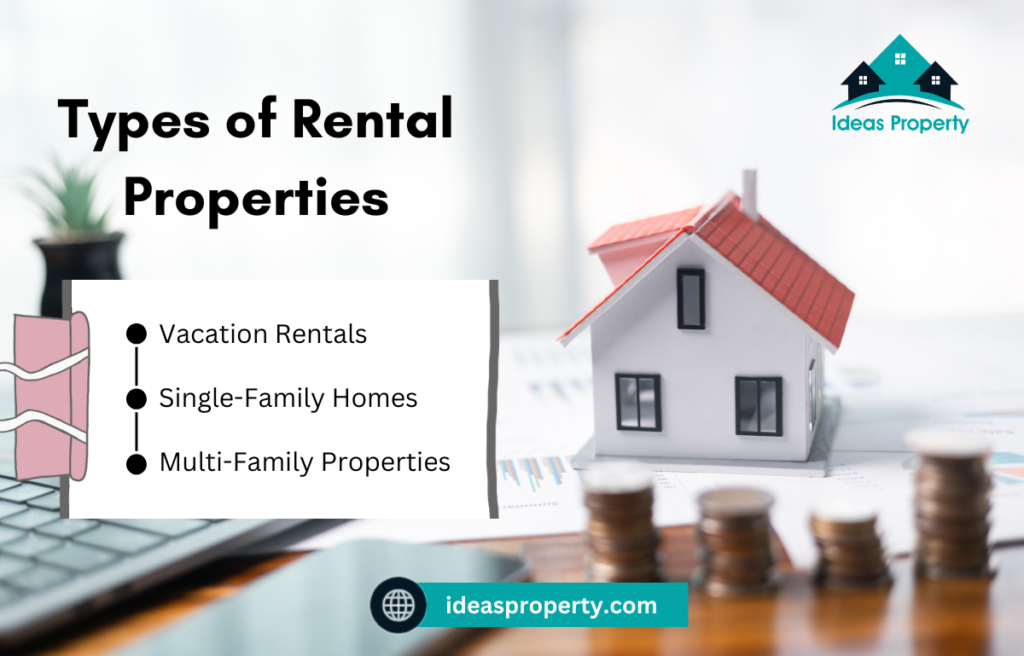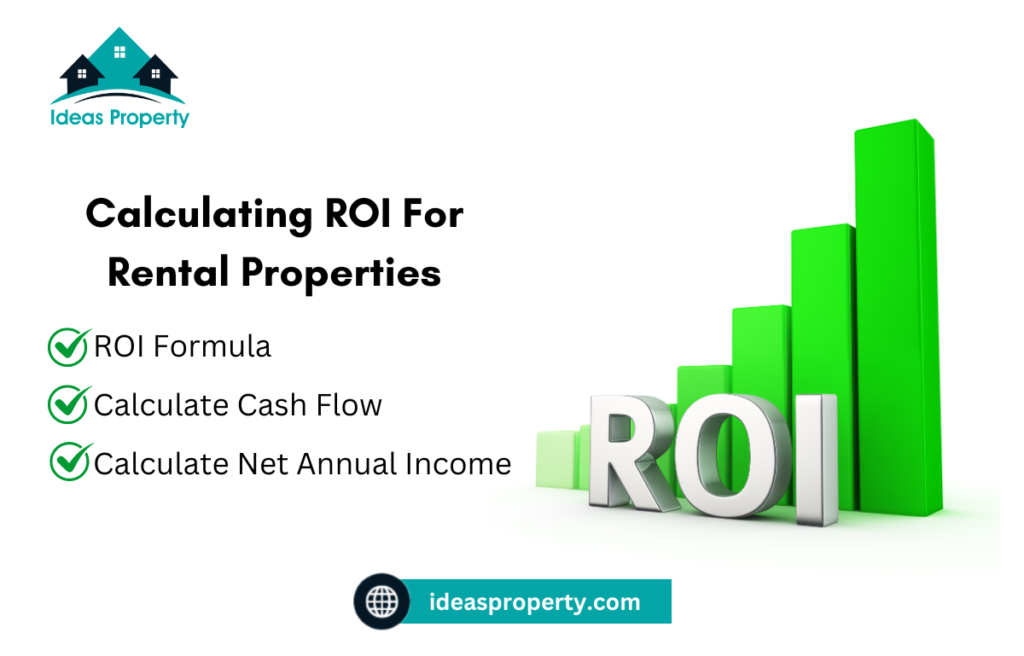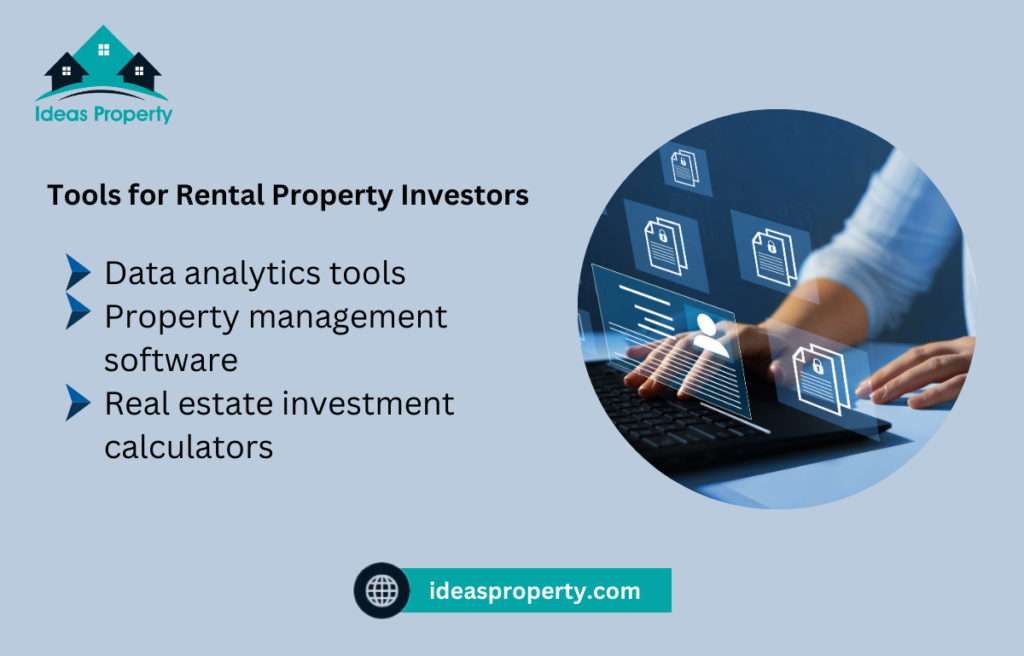Elevate Your Rental Property Investing: Strategies for Growth

Rental property investing is a lucrative strategy for individuals looking to build wealth through real estate. By purchasing properties to rent out to tenants, investors can generate a consistent stream of passive income while potentially benefiting from property appreciation over time. However, like any investment, rental property investing requires careful planning, research, and risk management to ensure profitability. Whether you’re a beginner looking to make your first investment or a seasoned investor aiming to grow your portfolio, understanding the ins and outs of this strategy is crucial for long-term success.
What is Rental Property Investing?
Rental property investing is a real estate strategy where investors purchase properties with the intention of renting them out to tenants. The main goal is to generate passive income through rent, while also benefiting from long-term property appreciation. Rental property investments are popular due to their potential for steady cash flow, tax advantages, and property value growth over time.
However, successful rental property investing requires a clear understanding of market conditions, the costs involved, and the risks, such as vacancy rates and maintenance expenses. Investors typically research various factors like property taxes, neighborhood amenities, and rental demand before making a purchase.
How does rental property investing work?
Rental property investing involves several steps. First, an investor must choose a property that is likely to attract tenants. This includes looking for locations with good amenities, low crime rates, and strong job markets. Once the property is purchased, it’s rented out to tenants, and the investor collects monthly rent, which should ideally cover the property’s mortgage, taxes, maintenance, and other operating expenses.
Investors may choose to manage the property themselves or hire a property management company, which typically charges 8-12% of the collected rent. Property managers handle tenant screening, rent collection, and maintenance, making the investment more hands-off for the owner.
What are the different types of rental properties?
Rental properties come in various forms, each with its own advantages and challenges:
- Single-Family Homes: These are standalone houses rented out to one family or tenant. They tend to be easier to manage and attract long-term tenants, making them a popular choice for first-time investors.
- Multi-Family Properties: These include duplexes, triplexes, and larger apartment complexes. Multi-family properties can generate higher income due to multiple tenants, but they often require more intensive management.
- Vacation Rentals: Properties rented out on a short-term basis, typically in tourist destinations. While vacation rentals can generate high income during peak seasons, they also come with higher maintenance costs and variability in demand.
This foundational understanding prepares investors to explore deeper aspects of rental property investing, such as evaluating profitability, managing tenants, and scaling their portfolio.

What are the key benefits of investing in rental properties?
Investing in rental properties offers several advantages that make it an attractive option for building long-term wealth. One of the most significant benefits is passive income. By owning rental properties, investors can generate a steady stream of rental income, which can serve as a supplement to other sources of income or as a primary revenue stream once the mortgage is paid off. Additionally, rental properties often provide appreciation, as the property’s value increases over time, allowing investors to sell at a profit or refinance to access equity for further investments.
Another critical advantage is the tax benefits available to rental property owners. Investors can deduct operating expenses, mortgage interest, property taxes, and even depreciation, which reduces taxable income and improves overall profitability. This makes rental properties one of the most tax-efficient forms of investment.
What are the risks associated with rental property investing?
While rental property investing can be rewarding, it comes with its fair share of risks. One of the main challenges is tenant issues. Even with a thorough tenant screening process, landlords may face problems like late rent payments, property damage, or the need for costly evictions. Problematic tenants can negatively impact cash flow and require additional management efforts, which can strain the investment.
Additionally, maintenance costs and property upkeep can be unpredictable. Rental properties require regular repairs and upkeep to remain habitable and retain value, and these costs can fluctuate dramatically depending on the property’s condition and age. In some cases, landlords may experience negative cash flow in months when significant repairs are needed.
Finally, market fluctuations and economic downturns can pose a risk to rental property investments. A decline in neighborhood desirability or local employment opportunities can reduce tenant demand, increase vacancy rates, and ultimately affect the property’s profitability. Real estate is also an illiquid investment, meaning it can take time to sell a property, especially in a downturn.
By weighing these risks against the potential benefits, investors can make informed decisions about whether rental property investing aligns with their financial goals and risk tolerance.
How to find the best rental properties for investment?
Finding the right rental property for investment requires a combination of research, strategy, and networking. Start by leveraging real estate listing websites such as Zillow, Redfin, and Realtor.com, which provide detailed property data and price trends. These platforms help investors assess market conditions and identify potential rental properties that match their investment goals.
Another strategy is to connect with investor-friendly real estate agents who specialize in rental property markets. These agents often have access to off-market listings and distressed properties that may not be listed on public platforms. Additionally, networking with other real estate professionals and attending real estate investment groups can expose you to valuable opportunities.
Finally, consider driving through neighborhoods to spot potential deals. Look for properties that show signs of neglect or distress, as these may offer opportunities for investment at below-market prices.
What are the most important factors to consider when buying rental property?
When evaluating a rental property for purchase, several factors are crucial to ensure it will be a profitable investment. First and foremost is the location. A property in a desirable neighborhood with access to amenities like schools, public transportation, and employment opportunities will attract more tenants and maintain high occupancy rates.
Additionally, pay attention to property taxes, as these can vary widely across regions and significantly impact your cash flow. High taxes aren’t always a deal breaker if the property is in a high-demand area, but they should be factored into your financial projections. Crime rates and future development plans in the area are also essential considerations, as they can affect both tenant demand and long-term property value.
Lastly, evaluate the property’s condition and potential repair costs. A property requiring significant repairs may reduce short-term cash flow, so ensure these expenses are accounted for in your investment plan.
How to evaluate the profitability of a rental property investment?
To determine if a rental property will be profitable, you need to calculate key financial metrics. The most important is cash flow, which is the income left after paying all expenses, including mortgage payments, property taxes, insurance, and maintenance costs. Ideally, you want the property to generate positive cash flow every month.
Another important metric is the cap rate (capitalization rate), which is the annual net operating income (NOI) divided by the property’s purchase price. This percentage gives you an estimate of the property’s return on investment without factoring in financing. Investors typically aim for cap rates between 5% and 10%, depending on market conditions.
Finally, calculate the cash-on-cash return, which compares the cash you’ve invested (down payment, closing costs, etc.) to the cash flow the property generates. This metric helps assess the efficiency of your investment, with a higher percentage indicating a more profitable property.
What financing options are available for rental property investors?
Investors have several financing options for rental properties, each with its pros and cons depending on the investor’s needs and qualifications:
- Conventional Loans: Offered by banks and credit unions, these are the most common financing options for rental properties. They typically require a 15% to 25% down payment and consider factors like credit score, rental income, and debt-to-income ratio. Interest rates are generally competitive.
- Portfolio Loans: These are mortgages held by private lenders or small community banks, often tailored to the investor’s needs. These loans are flexible but may come with higher fees and interest rates.
- FHA and VA Loans: FHA loans are available for multi-family properties, requiring low down payments but mandating that the owner occupy one unit. VA loans, for eligible veterans, offer 0% down for multi-family properties under similar terms.
- HELOC and Home Equity Loans: Investors can tap into the equity of their primary residence to finance a rental property. These loans offer lower interest rates, but there’s a risk of foreclosure if payments aren’t made.
- Private Money Loans and Hard Money Loans: These loans are typically offered by private investors or specialized lenders. They are easier to qualify for but come with higher interest rates, making them ideal for short-term investments like property flipping.
What is the 1% rule in rental property investing?
The 1% rule is a simple guideline used by real estate investors to evaluate whether a rental property is likely to be profitable. According to this rule, the monthly rent from a property should be at least 1% of the purchase price. For example, if a property costs $200,000, it should generate at least $2,000 in monthly rent. This rule helps investors quickly assess whether a property’s rental income can cover its mortgage, taxes, and other expenses.
While useful, the 1% rule is a rough estimate and should be combined with a more detailed financial analysis. Factors like property taxes, local rental demand, and maintenance costs can affect profitability, so investors should use this rule as a starting point rather than a definitive measure.
How to calculate return on investment (ROI) for rental properties?
To calculate the Return on Investment (ROI) for a rental property, investors compare the annual return (net profit) to the amount of money invested. Here’s how to break it down:
- Calculate Net Annual Income: Start with the total rental income for the year, then subtract all operating expenses such as maintenance, property management, insurance, and taxes. Don’t forget to include vacancy rates and unexpected repair costs.
- Calculate Cash Flow: This is the net income after subtracting mortgage payments. Cash flow is essential to ensure the property generates a positive income after expenses.
- ROI Formula: The basic ROI calculation is:
ROI = (Annual Rental Income−Annual Expenses)/ Total Cash Invested
For example, if an investor earns $10,000 in annual rental income, incurs $4,000 in expenses, and invested $50,000 (down payment and closing costs), the ROI would be:
ROI=(10,000−4,000)/ 50,000 = 12%
A healthy ROI for rental properties generally ranges from 8% to 12%, though this can vary depending on the market.

What is cash flow in rental property investing, and how do you manage it?
Cash flow in rental property investing refers to the difference between the income generated by the property (primarily through rent) and the expenses required to operate and maintain it. Positive cash flow means the rental property brings in more money than it costs to run, which is the ultimate goal for real estate investors. To calculate cash flow, subtract all operating expenses (such as mortgage payments, property taxes, insurance, and maintenance) from the rental income.
To manage cash flow effectively, it’s crucial to keep expenses under control. This involves setting aside funds for maintenance, property taxes, and occasional vacancies. Investors can also boost cash flow by increasing rent in line with market rates or adding services that generate additional income, such as charging for pet rent or laundry facilities.
How to effectively screen tenants for your rental property?
Effective tenant screening is key to ensuring a rental property remains profitable and well-maintained. The process begins with a thorough application that asks for personal information, rental history, and employment verification. Conducting a credit check helps assess the tenant’s ability to pay rent consistently, while a background check reveals any criminal history that could be a red flag.
It’s also essential to verify employment to ensure the tenant has a stable income. Many landlords aim for a tenant whose monthly income is at least three times the rent amount. Additionally, contacting previous landlords provides insights into the tenant’s rental history, including their payment habits and how well they maintained the property(
Good tenant screening minimizes risks such as non-payment, property damage, or legal issues related to eviction. A careful, thorough screening process helps landlords find reliable, long-term tenants who are more likely to care for the property.
What property management strategies should you consider for rental properties?
Successful property management is essential for maximizing profitability and minimizing stress for rental property owners. One key strategy is to hire a property management company. Professional property managers handle tasks such as tenant screening, rent collection, property maintenance, and legal compliance, allowing investors to take a hands-off approach while ensuring the property is well-managed.
For investors managing their properties independently, staying organized is crucial. This includes maintaining clear records of all expenses, conducting regular property inspections, and staying on top of repairs and maintenance. Proactively scheduling maintenance, like seasonal HVAC servicing or roof checks, can prevent expensive emergency repairs later.
Another strategy is to implement tenant retention programs. By responding promptly to tenant concerns and maintaining the property in good condition, landlords can encourage long-term leases, reducing vacancy rates and turnover costs.
How to handle repairs and maintenance in rental property investing?
Handling repairs and maintenance efficiently is vital for keeping tenants happy and protecting the value of a rental property. Property owners should establish a routine maintenance schedule, which includes tasks like inspecting plumbing, HVAC systems, and the roof. Regular maintenance prevents small issues from becoming costly repairs.
For unexpected repairs, having a reserve fund ensures that owners can cover emergency fixes without disrupting cash flow. It’s also wise to develop relationships with reliable contractors or maintenance personnel, allowing for quick and cost-effective repairs when needed.
In some cases, property management companies can handle maintenance and repairs on behalf of the owner, coordinating with tenants and service providers to ensure everything is done efficiently and at a reasonable cost.
How to scale your rental property portfolio?
Scaling a rental property portfolio requires a clear strategy, access to financing, and efficient management. The first step is to develop a game plan—decide whether you are focusing on cash flow, appreciation, or a combination of both. It’s also important to diversify your investments across different property types and markets to minimize risks. For example, branching into multi-family units or short-term rentals can help balance cash flow and appreciation.
Financing plays a crucial role in scaling. While traditional loans may limit the number of properties you can acquire, options such as portfolio loans or commercial loans offer greater flexibility for financing multiple properties. Additionally, refinancing existing properties to leverage their equity can free up cash for new purchases.
Building a reliable team of professionals—property managers, contractors, and real estate agents—will also allow you to focus on expanding your portfolio rather than daily management tasks.
What is the role of location in determining rental property success?
Location is one of the most critical factors in determining the success of a rental property. Properties in areas with strong job markets, good schools, and access to amenities like public transportation and shopping tend to attract high-quality tenants and maintain low vacancy rates. Moreover, properties in locations with growing populations or planned developments often experience greater appreciation, increasing long-term returns.
For cash flow-focused investors, lower-income areas might offer higher rental yields, though these come with higher risks such as tenant turnover and maintenance issues. Conversely, properties in premium locations might provide lower immediate cash flow but are likely to appreciate over time, making them ideal for long-term investment strategies.
What tools and resources are available to help rental property investors?
Rental property investors can leverage various tools and resources to streamline operations and maximize profits. Property management software like Buildium or AppFolio can help manage tenants, track rent payments, and handle maintenance requests efficiently. Additionally, platforms like Roofstock offer investment property listings, allowing investors to identify cash flow-positive properties with minimal efforts.
Investors should also use real estate investment calculators to analyze potential deals, estimating cash flow, ROI, and cap rates. Networking with other investors through local groups or online forums such as BiggerPockets provides valuable insights and opportunities. Staying informed on market trends and using data analytics tools can help investors make better decisions regarding property acquisition and portfolio growth.

What are the tax implications of rental property investing?
Rental property investors enjoy several tax benefits, but they also face important considerations. Rental income is generally taxable, but investors can deduct expenses such as mortgage interest, property taxes, insurance, and maintenance. Additionally, depreciation allows investors to write off the cost of the property over time, significantly reducing taxable income.
When selling a rental property, capital gains taxes may apply, but investors can use a 1031 exchange to defer these taxes by reinvesting the proceeds into a similar property. It’s essential for investors to consult with a tax advisor to maximize deductions and ensure compliance with tax regulations.
Scaling and managing a rental property portfolio is a dynamic process that requires careful planning, strategic investment, and an understanding of market trends. From securing financing to choosing the right locations and assembling a reliable team, every step plays a critical role in ensuring the long-term success of your rental properties. With the right approach, investors can build a sustainable portfolio that generates steady cash flow, appreciates in value, and withstands market fluctuations.
Real estate investing offers unique opportunities for wealth building, particularly through rental properties. By utilizing tools like property management software and staying informed on local market conditions, investors can make smarter decisions and optimize their investments. Furthermore, understanding the tax implications, such as depreciation and 1031 exchanges, ensures that investors can maximize their returns while complying with regulations. Whether you’re a new investor or a seasoned professional, taking a proactive approach to portfolio expansion is essential for achieving financial freedom through real estate.
